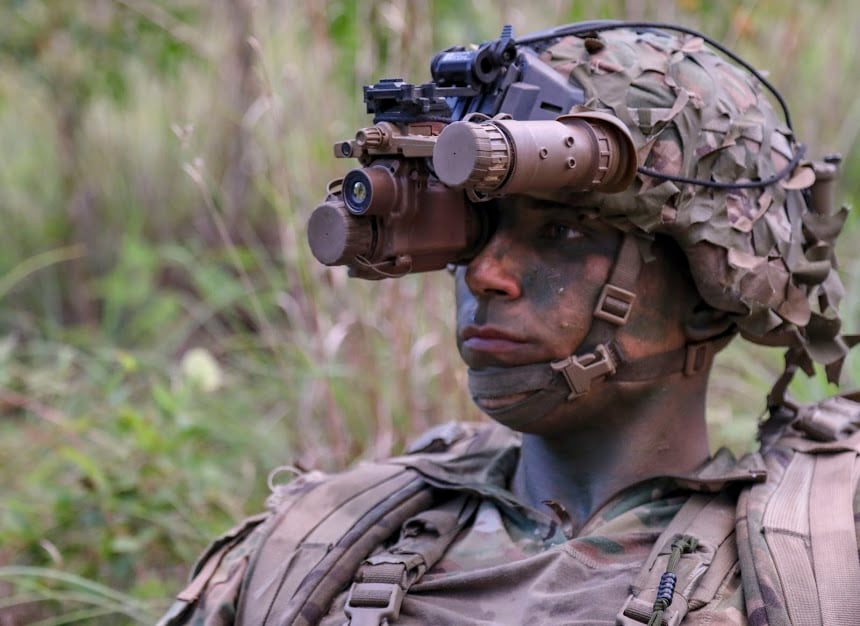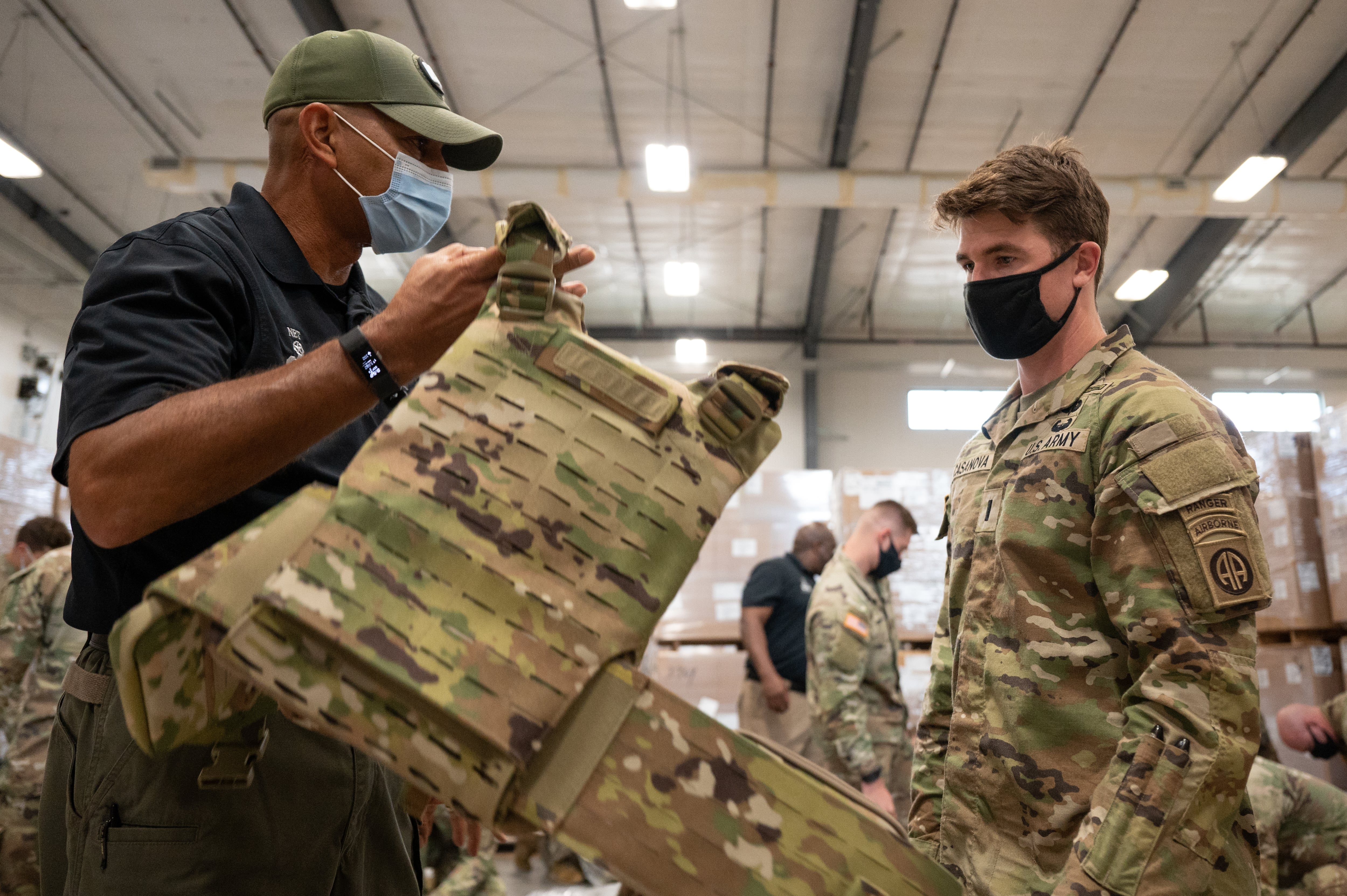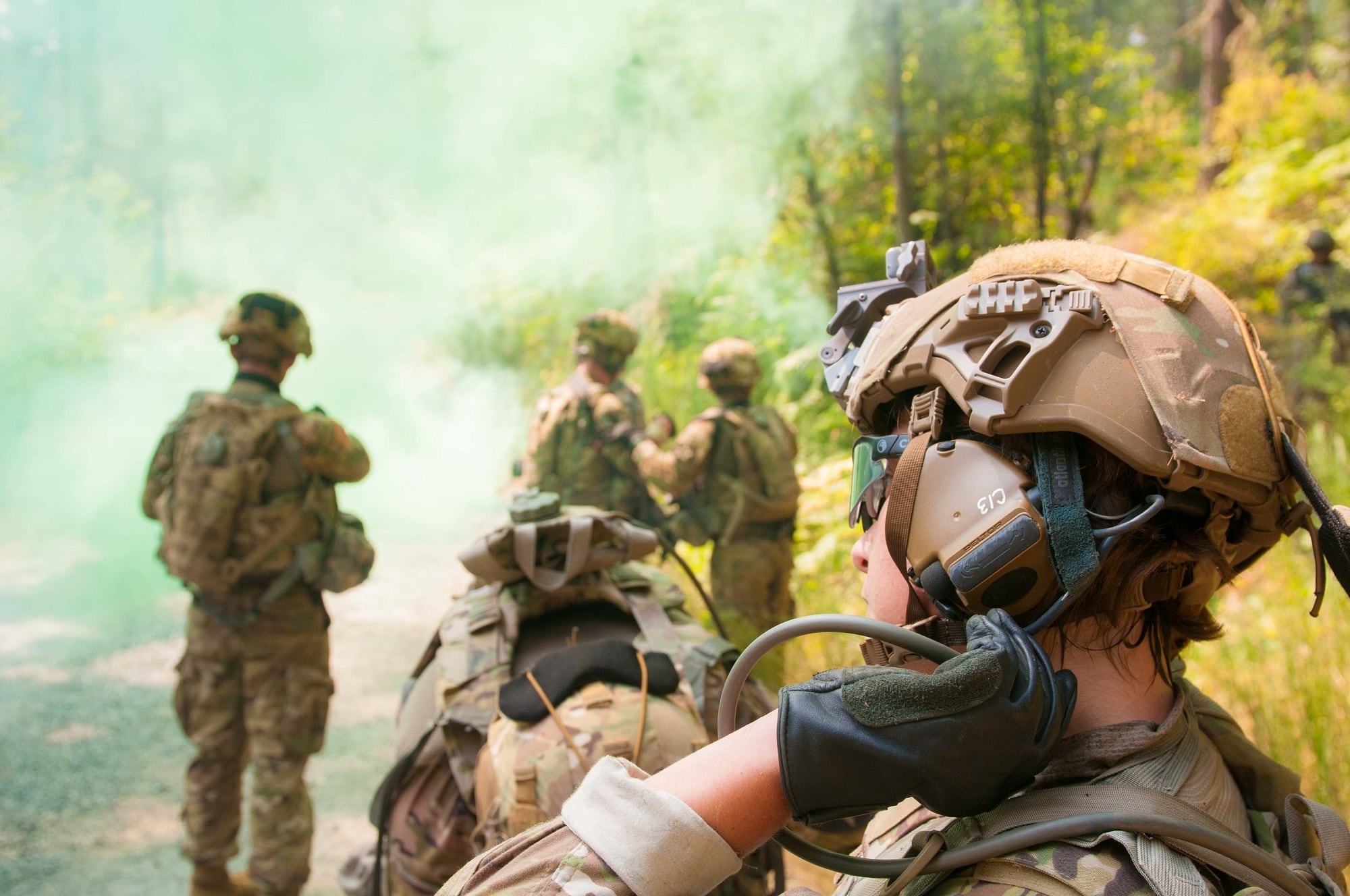WASHINGTON — If it touches troops then Program Executive Office-Soldier probably had something to do with its creation.
Maj. Gen. Anthony Potts heads the organization that develops soldier gear, including everything from boots to pistols to wearable batteries. His office has been busy this year getting some promising new equipment into the hands of soldiers across the force.
Potts talked with Army Times ahead of the Association of the U.S. Army’s Annual Meeting and Exposition about this past year’s work and what’s in store in the near term.
A whole new world
Last year, PEO Soldier began a new initiative — the Soldier Integration Facility — to run as a kind of “test track” for new technology. The SIF is an augmented reality environment that allows soldiers to test gear at the earliest phases of development.
“Since we stood that up we have collectively run in the neighborhood of about 50 separate events,” Potts said.
“The move is a derivative of how we think about developmental testing,” he added.
Once the command can prove that the technology solution is achievable, then they bring in soldiers and run scenarios at the SIF.
“The synthetic training aspects of the SIF allows us to bring soldiers in with the program managers and coordinate ways to take a look at solutions early as they work on soldier and squad integration and see the soldier as an integrated weapons platform and the squad as and integrated combat platform,” Potts said.
The SIF came in handy when testing the Army’s new Enhanced Night Vision Goggle-Binocular. Before it can be distributed to troops, the Army needed to find a pouch to fit the ENVG-B onto kit.

“What we found when fielding is that since they’re dual tube, they’re larger than the legacy PVS-14 night vision device,” Potts said.
So soldiers started using canteen cup pouches to hold them.
“We said, okay, what do we have in our inventory that might be used as a carrying case until we develop a more custom case?” Potts said.
Soldiers came in and emptied out every kind of carrying pouch they had and found out if the ENVG-B fit and how well that pouch fit on kit.
Then the soldiers ran it through the SIF virtual shoot house, and “within 30 days we had a recommendation for the Army on what to use in the interim,” Potts added.
The SIF was also used to help integrate the Soldier Borne Sensor, a microdrone capable of intelligence, surveillance and reconnaissance in a palm-sized device.
PEO-Soldier brought in engineers to help with the interface and run demonstrations with troops.
To run much of the electronic gear now being put on soldiers — and all the data that comes with it — the Army is developing Adaptive Squad Architecture.
That requires a few key steps.
Apps galore
First the Army had to establish the framework for how data-driven devices could connect to the soldier’s system, Potts said.
“But once that’s accomplished, we can use the app store to literally crowd source industry ideas for new applications that soldiers can use,” he added.
The team ensures that anyone using the app store has clean code that soldiers can download into their smart device.
And built into all of this is the Watchtower application that monitors what is being done with each app on any system.
Watchtower allows them to remove any app from the network.
“It’s not just blind self-replication that anyone can get into,” Potts said. “Ultimately we want it to be almost any software-based capability that can be individually tailored to the soldier’s needs. Just like how we all set up our own smartphones in specific ways.”
New kit
PEO-Soldier also continues to improve staples of the Army gear, such as body armor.
The new Modular Scalable Vest’s first version went to Security Force Assistance Brigades and the newest generation of the MSV went to the 82nd Airborne Division recently.

The newer version can be tailored to a wider range of sizes and cuts. This adaptability was developed specifically for female soldiers who have been short-changed in terms of body armor comfort for decades. But it’s not just a modification to make kit more comfortable.
The new MSV added more components to the vest, creating special release functions and other options, Potts said. The new version has special shooter’s cut plates that reduce load and increase mobility with the same level of protection for soldiers.
Head gear
The Integrated Head Protection System helmet is slightly lighter than the Advanced Combat Helmet, but it offers significantly more protection, Potts said.
He couldn’t divulge the level of ballistic protection for security reasons. But, PEO-Soldier has 50,000 of the new helmets on contract to be delivered.
“We’ve already done some fielding through certain requests, such as deploying units,” Potts said.
Walking fancy
Always a crowd favorite in the PEO-Soldier portfolio are uniforms and boots. And there are some tweaks that will help soldiers fit and feel better when wearing Army green.
“We are now in our pilot program for the ‘Ike jacket’ for the Army Green Service uniform,” Potts said.
It’s a similar cut to the iconic jacket worn by Gen. Dwight D. Eisenhower and staff during World War II
“We’ve put out 150 jackets into test phase and taken it to a cross section of the Army, we see males, females, officer, enlisted, warrant officer senior and junior ranks. We’ve got to figure out dimensions,” Potts said. “By the time you put all of the patches on, you’ll find different sizes may look different, for example.”
“The jacket is an optional item but once we get the patterns and approvals it will go to vendors to sell at Army exchanges on post,” Potts added.
The command recently kicked off studies on a lightweight Army Green Service Uniform jacket.
It’s an optional jacket for hotter, more humid climates. And they’re working on the optional AGSU skirt for female soldiers.
The improved hot weather uniform female cut is now available.
“That’s pretty significant and has taught us a new way of fielding uniforms,” Potts said.
The Army used to go after the largest population size first, and then come back and field items for taller or shorter soldiers and females. But now they’re working to field all these items together moving forward.
The new jungle lightweight combat boot has also started fielding where it’s needed most — like the jungle school under the 25th Infantry Division in Hawaii. They work well in the mud and have a lighter, tennis-shoe-like feel to them, Potts said.
Night, night
Finally, there’s the Enhanced Night Vision Goggle-Binocular, which has been fielded to close combat forces.
But what about the rest of the Army?
PEO Soldiers’ Night Vision Device Next program is going after a night vision solution for non-close combat forces, as well.
“It will replace the PVS-14s and we’re embarking on a program over the next one to two years to give a
dual-tube, white phosphorous device to non-close combat soldiers,” Potts said.
Todd South has written about crime, courts, government and the military for multiple publications since 2004 and was named a 2014 Pulitzer finalist for a co-written project on witness intimidation. Todd is a Marine veteran of the Iraq War.





